
Understanding fractions on a number line
Despite the fact that there is an increasing consensus in educational research that number lines are the most effective instructional representation for fractions, and curricula are increasingly making them an emphasis, number lines are consistently hard to teach.
There are a number of reasons for this, but they can be summed up in a simple statement: fraction number line instruction requires a high degree of just-in-time feedback to be effective, especially for struggling students. In a traditional classroom setting, it’s next to impossible to provide this level of instruction because the teacher can’t be everywhere at once.
Why number lines are a great model for teaching fractions
Fractions are often students’ first exposure to abstraction in math, and understanding is critical for future coursework, including algebra. Students who develop a strong understanding of fraction number sense—recognizing that fractions are numbers that can be expressed in different forms—will be far better prepared than those who only rely on memorized “tricks” or procedures. A key aspect of this number sense is understanding fraction magnitude (size), which allows students to reason effectively with and about fractions in various contexts.
According to research, number lines are the most effective instructional representation of fractions. But why? Teaching fractions on a number line helps students understand that fractions are numbers, too, each with a location on the number line, just like any other numbers they might encounter. However, shaded area models (like pizzas and pies) often seem more approachable for students unfamiliar with number lines because of their familiarity and visual simplicity.
In the long run, number lines will help students understand and work with fractions in far deeper contexts! For example, take fractions greater than one. If students can picture fractions as numbers on a number line, they will be much more prepared to understand fractions greater than one conceptually. With a shaded area model, it’s much harder to visualize a fraction like 7/4 if a circular area model only accounts for four slices.
“Several of my students struggled with identifying and naming fractions, but with the help of Frax, those students are now able to identify and name fractions without hesitation. The majority of my students struggled with fractions on a number line, but through constant interaction with Frax, I am seeing more and more students understand the fractions on a number line.” -Teacher
What are effective instructional techniques for teaching with number lines?
Given the difficulties of teaching this topic in a traditional classroom, teachers often (and understandably!) feel limited and frustrated in their ability to teach fractions on a number line effectively. While there’s no magical solution to the difficulties inherent in teaching fraction number lines, a few instructional techniques can mitigate them.
When it comes to teaching fractions on a number line to students, follow these four basic but effective steps:
- Start small and practice, practice, practice
- Count intervals, not tick marks
- Incorporate fractions greater than one into your instruction early
- Create time in your lessons to provide students with immediate feedback
Number line basics #1: Start small and go slow
Number lines are difficult for students. Period. Children need a lot of time and practice successfully creating and reading fractional representations to develop reliable accuracy on various problems.
While there’s a natural temptation to see “how far you can get” with your students in a single lesson, it’s not a good idea. Number lines are a tool students use to learn several important and fairly complex concepts. Learners must be able to interpret number line representations with high fidelity and fluidity, which is only developed with repeated practice.
What’s the upshot? When first learning how to read fraction number lines, it is far better to give students multiple successes on more straightforward problems. For instance, 20-30 exercises like the below example will allow students to form increasingly solidified neural pathways around the number line representation.

On the other hand, introducing unnecessarily difficult or visually dense representations (like this example below) – before a student is confident with the number line itself – will only create “cognitive noise” and confusion. This may slow a student’s progression towards mature number line work and cost you valuable instructional time.

Bottom line: brain-based education teaches us that “practice makes permanent.” Make sure your students practice the right thing with the correct conceptualization before moving on to more complex or challenging material.
Number line basics #2: Teach students to count intervals, not tick marks
One of the main points of confusion when teaching fractions on a number line is the relationship between the denominator value and the number of tick marks. Does the following number line represent thirds or fourths?

For someone familiar with the representation, it’s clear that the number line above represents fourths – there are four intervals between 0 and 1. However, for a student who is still transitioning from the predictable world of integer number lines to the far-less-predictable world of fraction number lines, the answer is not so clear.
The tick marks are what “jump off the page” visually, so it’s completely understandable that a student would see three tick marks and think: “3… that’s thirds!”

Of course, you can teach tricks like: “add 1 to the number of tick marks between 0 and 1.” However, using this trick – as with many shortcuts in math – obscures the underlying conceptual reality that makes the number line so powerful. That is, the number line shows partitions of the space between 0 and 1 in the same way that a shaded area model shows partitions of a shape that represents 1… all without the inconvenient aspects of shaded area models (see below).
You need to train your students to look for the intervals – the actual space or distance on the number line – rather than the tick marks that divide that space.

Once students have learned to do this reliably, much of the difficulty surrounding number lines evaporates, unlocking the potential for learning in this powerful representation.
Number line basics #3: Incorporate fractions >1 as soon as possible
For many students, fractions are “easy” until they start representing quantities greater than one. At that point, metaphors like “equal sharing” become more difficult. “Share a pizza equally four ways… and then give a piece to five different people.” That's not so easy to understand...
Part of what makes the number line representation effective at building strong fraction number sense is that fractions greater than one are completely intuitive. No convoluted explanations are necessary about how you can have more pieces than a whole – fractions greater than one are just another point on the number line!

Mixing problems that require the student to work with fractions greater than one into your early instruction will help your students build surprisingly strong number sense without much fanfare. You will be amazed at the dividends this pays when you compare mixed numbers and fractions greater than one! Once students understand the number line, comparing fractions on a number line will feel natural rather than something “new” to learn.
Here’s a teaser: Which is bigger, 7/3 or 2 2/3 ? No mixed number conversion is required!

Number line basics #4: Structure your lessons to minimize the time between a student error and corrective feedback
As mentioned above, teachers tend to spend little time on number line content mainly because learning to use the number line effectively is feedback-intensive. It requires a very short gap in time between a student’s mistake and a corrective piece of feedback. Otherwise, the student may wind up inadvertently cementing erroneous ways of interpreting or working with the representation.
Any math teacher will tell you that teaching students to unlearn a given method or misconception is ten times more difficult than teaching something for the first time. We need to get number line instruction right from the beginning for our students; otherwise, a vicious cycle can occur.
The student perceives number lines as “hard” (unfamiliar and opaque to the student). Using them leads to erroneous or inefficient solutions.

The student becomes increasingly resistant to doing new work with this difficult representation.

The student’s brittle and inefficient methods are increasingly inadequate for new, more complex content.

This results in the student working harder for less success.

The perception of number lines as “difficult” is thus reinforced…and the cycle continues.
The only way to prevent this cycle from starting is never to allow it to begin in the first place.
Unfortunately, doing so requires the nearly impossible: the teacher needs to be immediately available to each student as they learn and make mistakes. When the student begins counting tick marks, the teacher must immediately redirect them to count intervals instead. When a child incorrectly counts all intervals between 0 and 2 to find the denominator value of a fraction >1, they need to be immediately redirected to count only the intervals between 0 and 1.
There are no magic solutions to this problem. However, some approaches can help.
Carefully craft student pairings when doing number line lessons. The goal is to ensure that students who are already proficient can provide feedback to students who are still building proficiency.
Unfortunately, this is often impractical or impossible. When you first introduce the topic, few students will already know enough material that they can be relied on to give accurate feedback. Students take a long time to develop their proficiency, so it will be a while before a teacher can reliably count on them to help their peers.
Design lessons that allow for small group instruction. Math “center time” can be helpful – have the majority of the class complete self-directed activities while you work with a small group of students, where you can immediately intervene when they make mistakes or verbalize misconceptions.
Ensuring that you have enough time dedicated to such lessons is vital. Students need a lot of practice to cement their conceptual understanding and build effective strategies for working with number lines. Only one or two of these small-group times before “moving on” will significantly increase the danger of that vicious cycle setting in for many of your students.
Utilize technology tools that allow the entire class to work simultaneously on number line skills. The benefit of an online resource for this topic is that it allows all students to receive just-in-time feedback as needed. If the program is well-designed, students will get the gentle scaffolding and immediate feedback they need to become proficient users of this powerful number line tool.
It’s essential that you find an appropriate, effective tool for this instructional practice. Not all online resources are created equally, and a platform that doesn’t provide appropriate feedback or adapt to a student’s growing proficiency – or recurring difficulties – will be hardly better than paper and pencil work (at best) and counterproductive (at worst).
Frax is a powerful tool that builds fraction number line skills in a very short time
ExploreLearning Frax is demonstrated to help grades 3-5 students build robust fraction skills in a remarkably small amount of time. Frax’s game-based program includes a variety of fraction number line activities to help students confidently understand fractions as numbers.
How does Frax support and enhance instruction?
- Highly scaffolded instruction in each Frax mission
- Offline activities that reinforce number line concepts and assess understanding
- Motivating rewards to boost engagement across all ability levels
- Just-in-time remediation and adaptive questioning
- Progress monitoring and real-time reporting to intervene when students are stuck
- Game-packed Review Room for additional practice
- Classroom competitions to practice number line concepts
“Many students were engaged immediately. I love the vocabulary Frax uses. Students easily grasped the concepts without using the terms numerator and denominator. Students had a more in-depth understanding that made transitioning fractions to the placement of them on number lines easier. I also love that the written prompts can be read to them. Many of my struggling readers can still be successful by clicking the reading prompts." -Teacher
Number lines make sense with Frax
In Frax Sector 1, students develop a strong conceptual understanding of fractions as numbers (topics typically addressed in grade 3). Students then apply and deepen their understanding in Sector 2 (topics typically addressed in grade 4), where they expand their knowledge to fractions equivalency and early fractions arithmetic.
However, students in grades 3+ can use Frax at any time for intervention or extra practice. Completing Frax Sector 1 before Sector 2 leads to more efficient and beneficial fractions instruction for teachers and students in the classroom. Use Frax before your fractions unit for the best results—you’ll accelerate instruction and build a class-wide understanding of fractions. When it comes time for your core instruction, students will already have the baseline knowledge and confidence to tackle advanced fractions work.
“Students seem to grasp the concepts and basics much faster than using manipulatives. Some students still need both the Frax program and manipulatives, but most have a more in-depth understanding with just Frax than with only manipulatives. Frax is less time consuming on a daily basis and the entire fraction unit was easier to teach than in previous years.” -Teacher
Get ready—Frax Sector 3 is live!
Now available, NEW Frax Sector 3 will help students level up their learning with all-new adventures that extend and deepen their understanding of fractions. In Sector 3, students use the foundations built in Sectors 1 and 2 to navigate new worlds and develop a strong and durable mastery of grade 5 fraction arithmetic. No tricks or memorization required.
From Day 1, students work with fractions as numbers in an intuitive setting as they associate a fraction’s value with the length of a block model. With Frax, students seamlessly transition to the number line representation, with an emphasis on understanding the space between 0 and 1 and counting intervals to determine the denominator value.
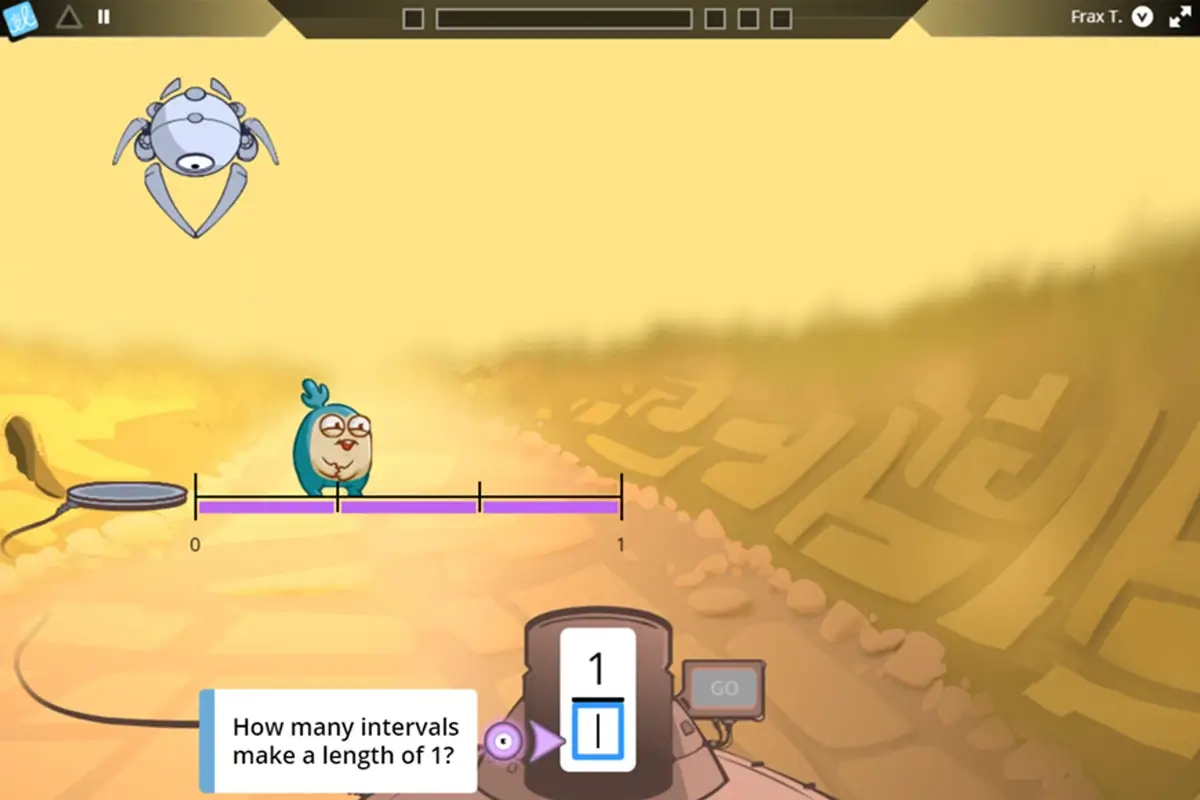
Space-themed games and engaging lessons help students build confidence and competence in fraction number line representations, with adaptive logic ensuring they only see questions they are ready to tackle.
Students read points on a number line…
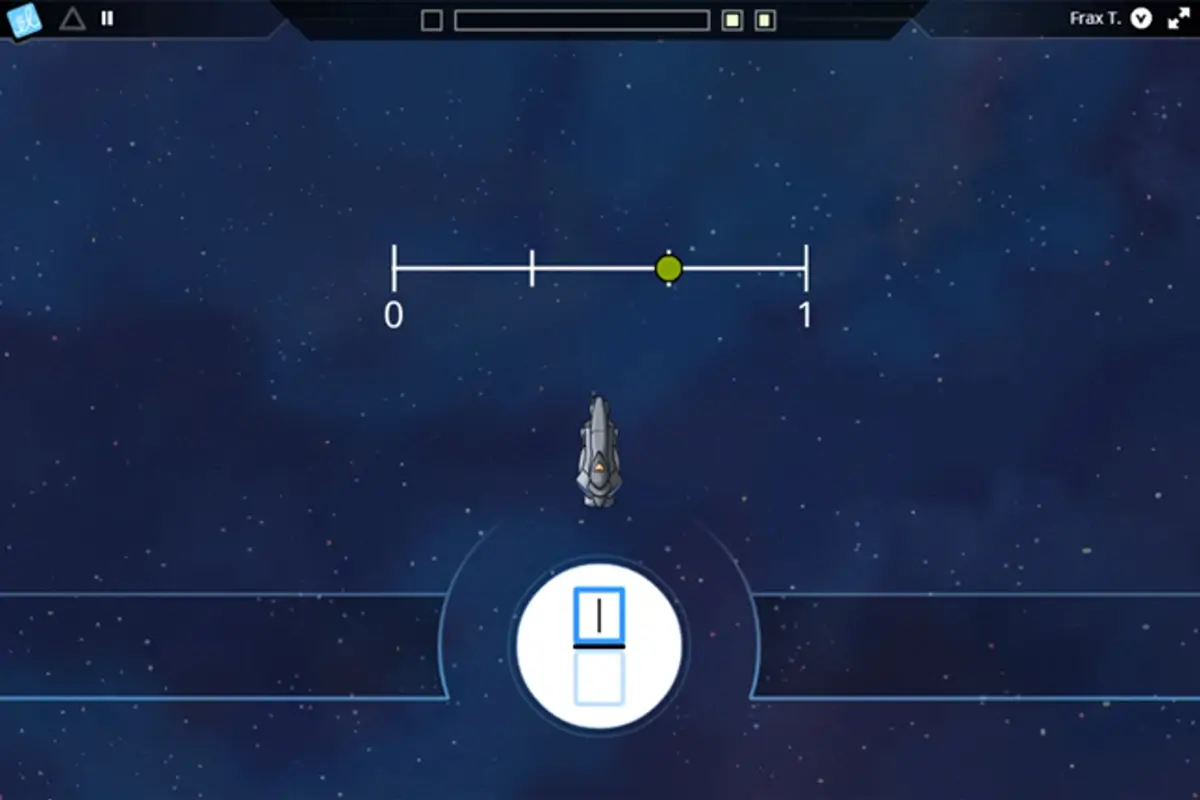
… and place points on number lines.
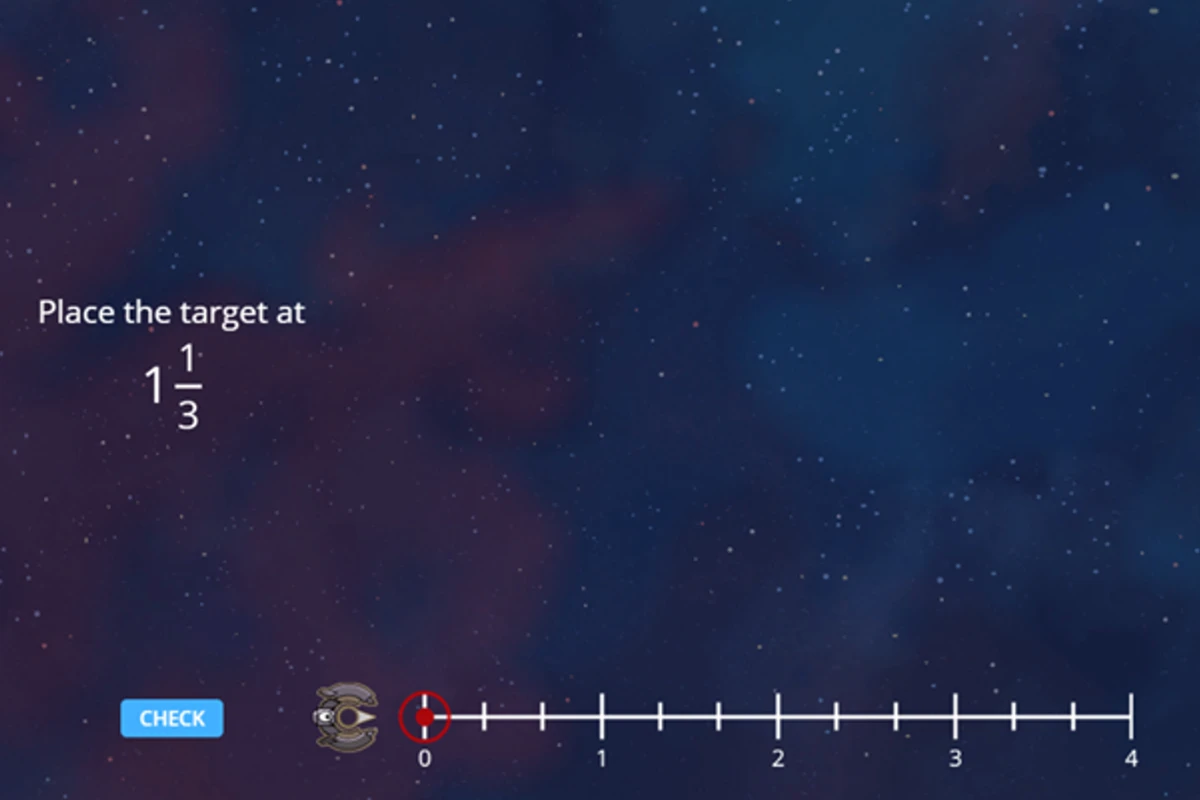
Students create number lines themselves…
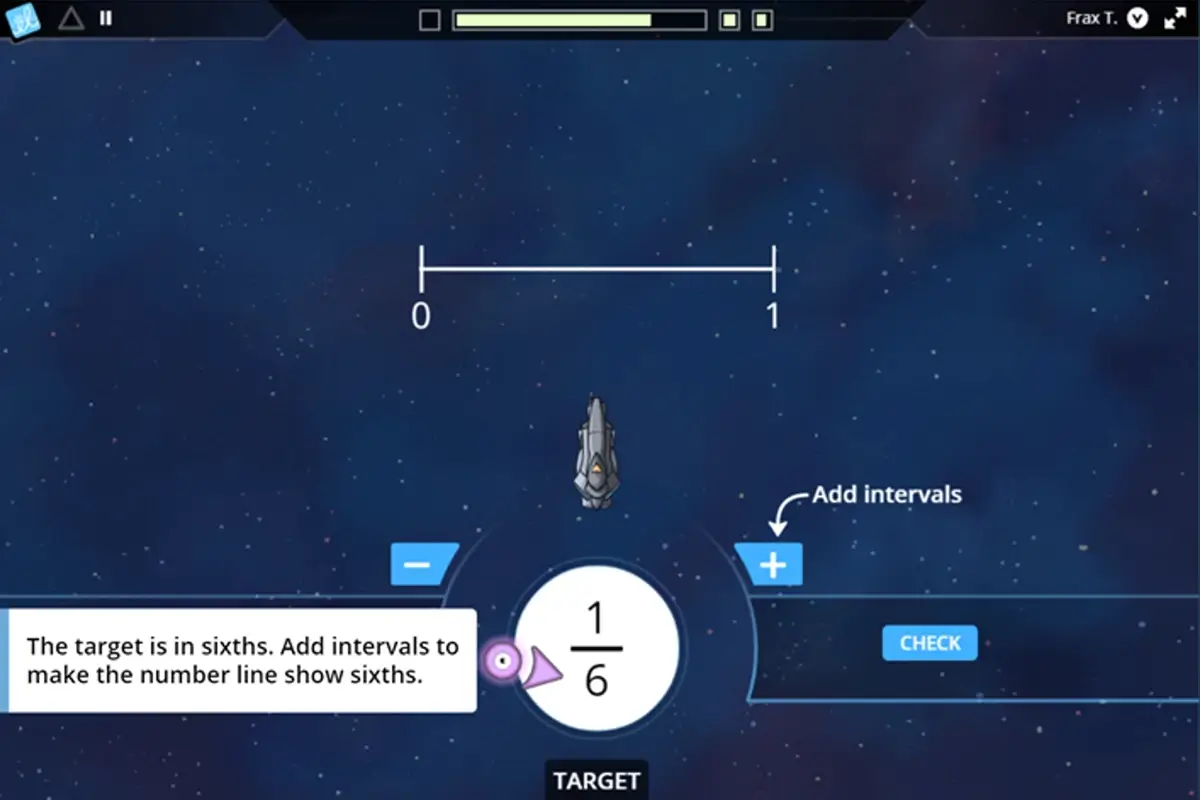
…and estimate fraction and mixed number locations on unmarked number lines.
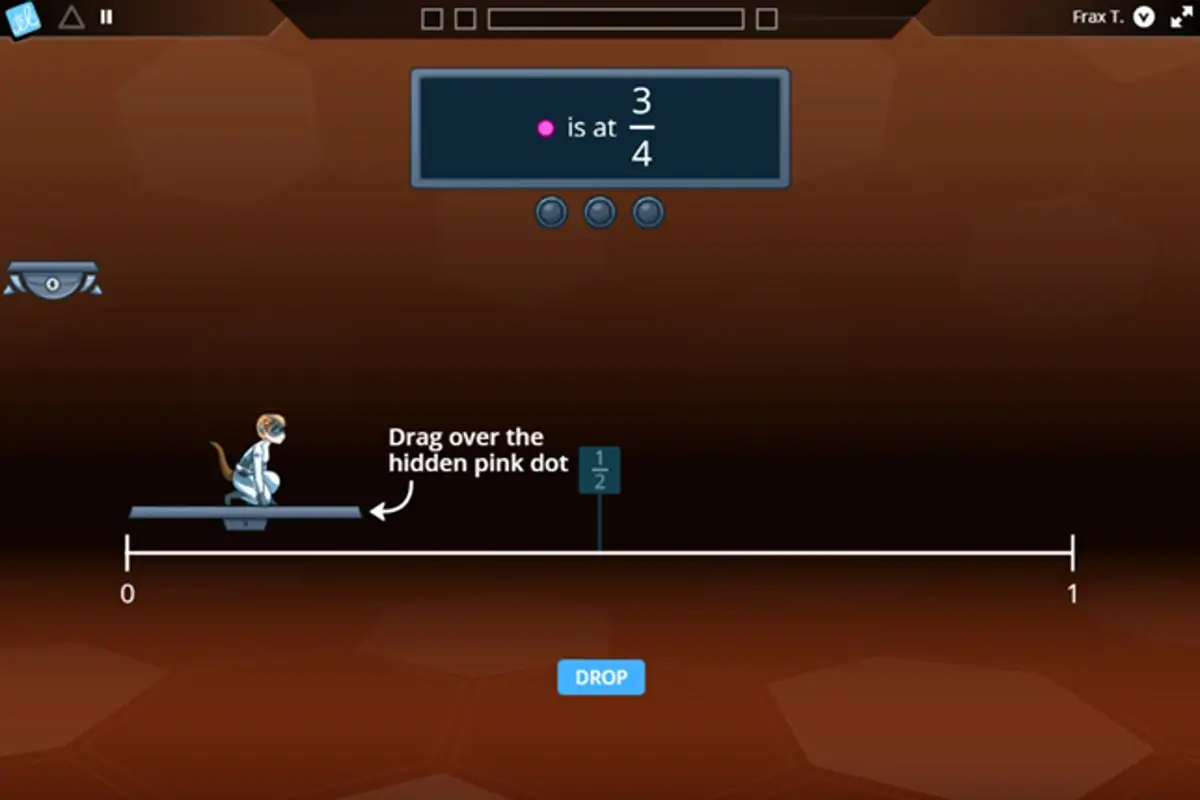
These skills are embedded throughout the Frax student experience, so even when the curriculum focuses on a different topic, students still receive the practice they need to solidify their understanding and skills. Frax unlocks your ability to teach fractions concepts in the ways you often long to but find yourself prevented from doing so because of the wide differences in student performance and the need to get all students to a baseline level of performance.
About the Author

Jesse Mercer, Senior Product Designer at ExploreLearning
Jesse Mercer, a Senior Product Designer at ExploreLearning, has over 20 years of experience in education and related fields. He has an MA in Math Education, is a National Board Certified teacher for secondary mathematics, and was a recipient of his district’s “Golden Apple” award for teaching. During his 13 years in the classroom, Jesse taught upper elementary and middle school mathematics courses, ranging from 5th-grade math through Algebra I. He currently works with several other designers on creating the curriculum and instructional content for Frax.
